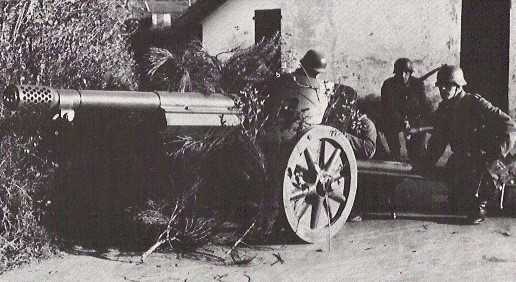
| Year | May 1942 |
| Weapon Type | Medium Anti-Tank Gun |
| Origin & Designer | Germany/Rheinmetall-Puteaux |
| Numbers Produced | 3.712 |
| Crew | 4 (Commander, Gunner & 2 x Loaders) |
| Calibre | 75mm (75x350R) |
| Elevation | -10° to +18° |
| Traverse | 60° |
| Breech | Nordenfelt Interrupted Screw |
| Recoil | Hydropneumatic |
| Gun Sight | Z.F. 3x8 |
| Gun Mount | [@gun_mounts] |
| Carriage | Split Trail |
| Trailers | [@trailers] |
| Gun Shield | Two 4mm Plates (Spaced Armour) |
| Armoured Plate | [@armoured_plate] |
| Barrel Length | 2.720mm (L/36) |
| Overall Length | 4.68m |
| Width | 1.85m |
| Height | 1.05m |
| Weight | Weight in Traction: 1.270 kg Weight in Action: 1.190 kg |
| Round Weight | K.Gr.Pz(p) - 6.8 kg (AP) Sprgr 233/1(f) - 6.19 kg (HE) |
| Muzzle Velocity | 570 m/s (AP) 577 m/s (HE) |
| Feed | [@feed] |
| Magazine Capacity | [@magazine_capacity] |
| Practical Rate of Fire | [@practical_rate_of_fire] |
| Rate of Fire | 14 r.p.m. |
| Maximum Rate of Fire | [@maximum_rate_of_fire] |
| Maximum Ceiling | [@maximum_ceiling] |
| Maximum Ground Range | [@maximum_ground_range] |
| Maximum Range | 10.000m |
| Armour Penetration | 80mm @ 500m @ 30° |
| Traction | Motorised (Sd.Kfz 10) |
| Variants | [@variants] |
| Notes | The PaK 97/38 was an interim weapon developed to help stem the tide of Soviet heavy armour. It was a combination of the French 75mm field gun and PaK 38 carriages. The 75mm mle 1897 was captured in large numbers during the early part of the war and this was modified and fitted onto the carriage of the PaK 38 anti-tank gun. The gun had a violent recoil and was named “the mustang” by the troops. It was first issued in 1942 and was found adequate for the role. When the PaK 40 began to be produced, the PaK 97/39 still remained in use in reserve units. |